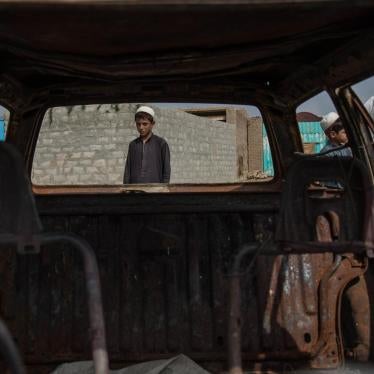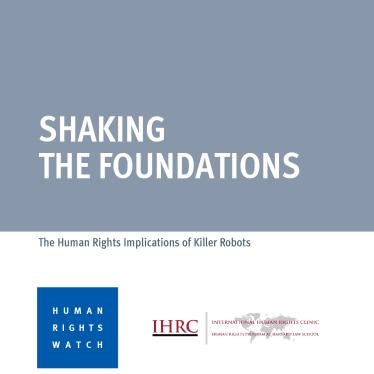What is new about this policy?
The Bush Administration’s policy on landmines, announced February 27, 2004, reverses many of the positive steps the U.S. has made over the past decade to eradicate antipersonnel mines. The use of self-destructing mines is permitted indefinitely without any geographic restrictions. The use of long-lived antipersonnel mines is now permissible in Korea until 2010. The only apparent surviving element of previous landmine policy is the 1992 legislative ban on antipersonnel mine exports, in effect through 2008, which could not be overturned by Presidential directive.
Discarded by this policy is the 1994 objective of being part of a global ban of antipersonnel mines. The policy jettisons the commitment to join the 1997 treaty prohibiting antipersonnel mines by 2006 if alternatives were identified and fielded. Also departed is the 1998 commitment to cease using antipersonnel mines, except those contained in “mixed systems” with antivehicle mines, everywhere in the world except for Korea by 2003. If this commitment were maintained, 8.4 million antipersonnel mines would not be eligible for use anymore, except in Korea.
The commitment to stop using long-lived antivehicle mines after 2010 is new, and is a welcome announcement. The U.S. has been moving away from long-lived antivehicle mines for many years, procuring only self-destructing types. Many long-lived antivehicle mines in the U.S. inventory will be obsolete by 2010.
What is its impact on the movement to ban antipersonnel mines?
This new policy is completely out-of-step with the global movement that has been working for over a decade to eradicate the weapon. The unprecedented alliance of governments, international organizations such as the United Nations and International Committee of the Red Cross, and civil society groups, such as Human Rights Watch and the International Campaign to Ban Landmines (ICBL) made history in 1997, when they secured the 1997 treaty prohibiting antipersonnel mines.
The new policy undermines the movement’s efforts to universalize the 1997 Mine Ban Treaty by providing justification for other holdout states to use, produce, or export these indiscriminate weapons. A total of 150 governments have joined the Mine Ban Treaty, of which 141 are full States Parties.
Do U.S. landmines contribute to the global problem?
The U.S. is one of just fifteen countries left in the world that produce or reserve the right to produce antipersonnel mines. U.S.-manufactured antipersonnel mines have been found by deminers in at least twenty-eight mine-affected countries or regions. The U.S. exported over 5.6 million antipersonnel mines to thirty-eight countries between 1969 and 1992 and stockpiled its antipersonnel mines in at least twelve foreign countries.
How many landmines does the U.S. stockpile?
The U.S. stockpiles 10.4 million antipersonnel mines and 7.5 million antivehicle mines making it the world’s third largest “mine power.” Included in this 17.9 million landmine stockpile are 1.5 million long-lived antipersonnel mines and 1.3 million long-lived antivehicle mines. Mixed systems that contain both self-destructing antipersonnel and antivehicle mines constitute only eleven percent of the overall stockpile.
When was the last time the U.S. used landmines?
The U.S. last used landmines in the 1991 Gulf War by scattering 117,634 landmines in Iraq, Kuwait, and Saudi Arabia. U.S. forces in recent combat operations in Afghanistan or Iraq did not use landmines.
Protective minefields from the Soviet era are incorporated into the perimeter defense scheme at locations U.S. forces currently occupy in Afghanistan. Military advantage is derived from these minefields and the U.S. is obligated to comply with 1996 Amended Protocol II of the 1980 Convention on Certain Conventional Weapons to mark and monitor these minefields to ensure the effective exclusion of civilians. The US failed to report measures it has taken to protect civilians from the effects of these landmines in its annual national reports for this treaty submitted in December 2002 and November 2003.
Do “smart” mines still pose a humanitarian threat?
The time when the mines are armed and when they self-destruct or fully self-deactivate can be as long as nineteen weeks. In theoretically perfect conditions all of these mines should destroy themselves. However, mines are damaged during delivery, two-to-five percent of self-destruct mechanisms fail, and up to ten percent of the mines fail to arm properly. This means that a proportion of these U.S. mines would always remain intact on the surface of the ground without any indication whether the mine is live or not. Since aircraft or artillery remotely deliver these mines in large numbers, they are not required to be marked, fenced, or monitored to exclude civilians. From a deminer’s perspective, all mines encountered must be treated as though they are live. The mines must be cleared one-at-a-time using the same procedures used to clear all mines. The humanitarian impact is still present regardless of whether the mine has a self-destruct mechanism.
How reliable are U.S. landmines that self-destruct?
Assurances that U.S. landmines are unquestionably reliable are inconsistent with the cautions contained in Army field manuals, the findings of ammunition surveillance testing data, and experiences in the 1991 Gulf War. The Pentagon provided the U.S. General Accounting Office in 2002 with test records that documented reliability problems with eight of its self-destruct landmine systems; among other problems, some landmines did not self-destruct as intended. The reports cited by the GAO indicated at least one test produced hazardous dud mines. A U.S. demining contractor working in Kuwait in 1991-1992 reported finding substantially more U.S. landmine duds than would be expected if dud rates were as low as documents and briefings stated.
Do alternatives exist for landmines?
Concerns about the utility, safety, and the fratricide potential of U.S. landmines persist. More discriminating weapons are coming into service, such as the air-dropped Sensor Fuzed Weapon (SFW) and artillery-delivered Sense and Destroy Armor (SADARM) system. The programs to identify and field alternatives to landmines have been in limbo in recent years, pending the completion of the policy review. A total of $182 million has been invested in programs over the past four fiscal years to identify and field a one-for-one alternative for landmines. A total of $1.07 billion was requested in 2003 to fund alternatives programs over the next seven years.








